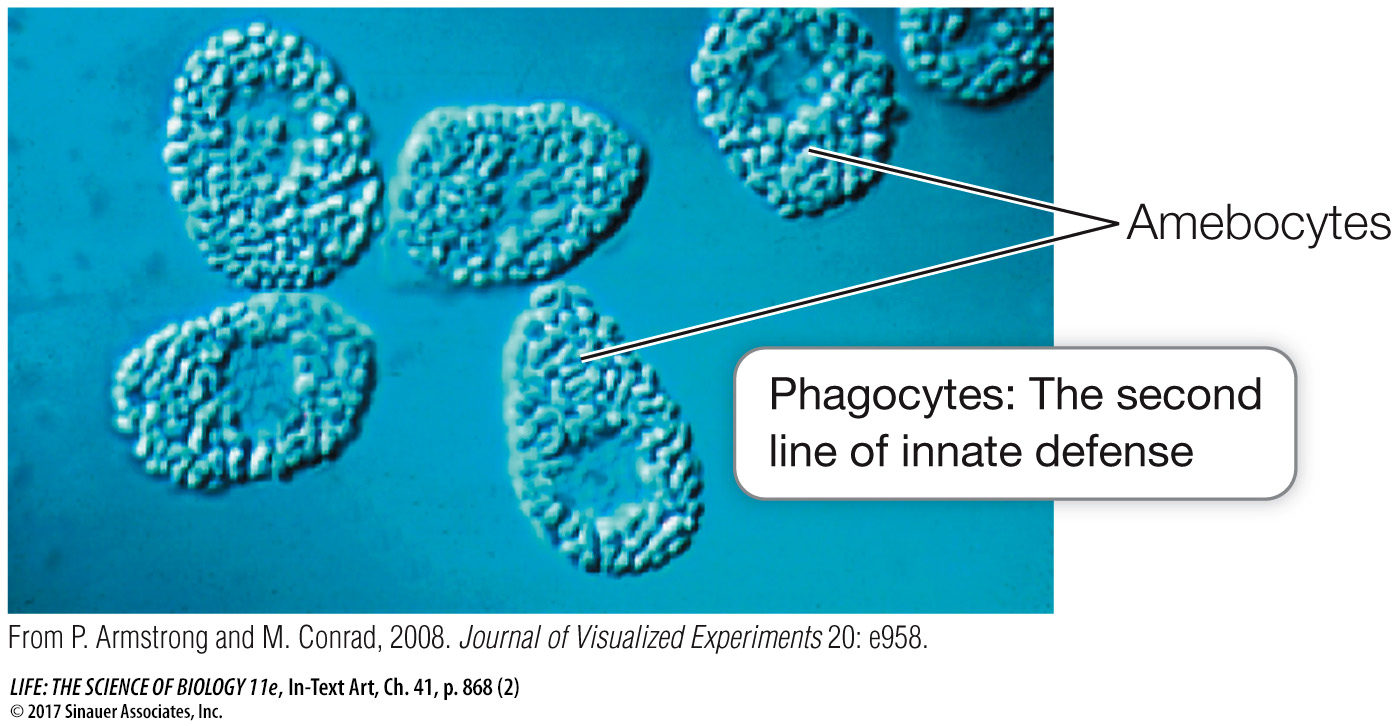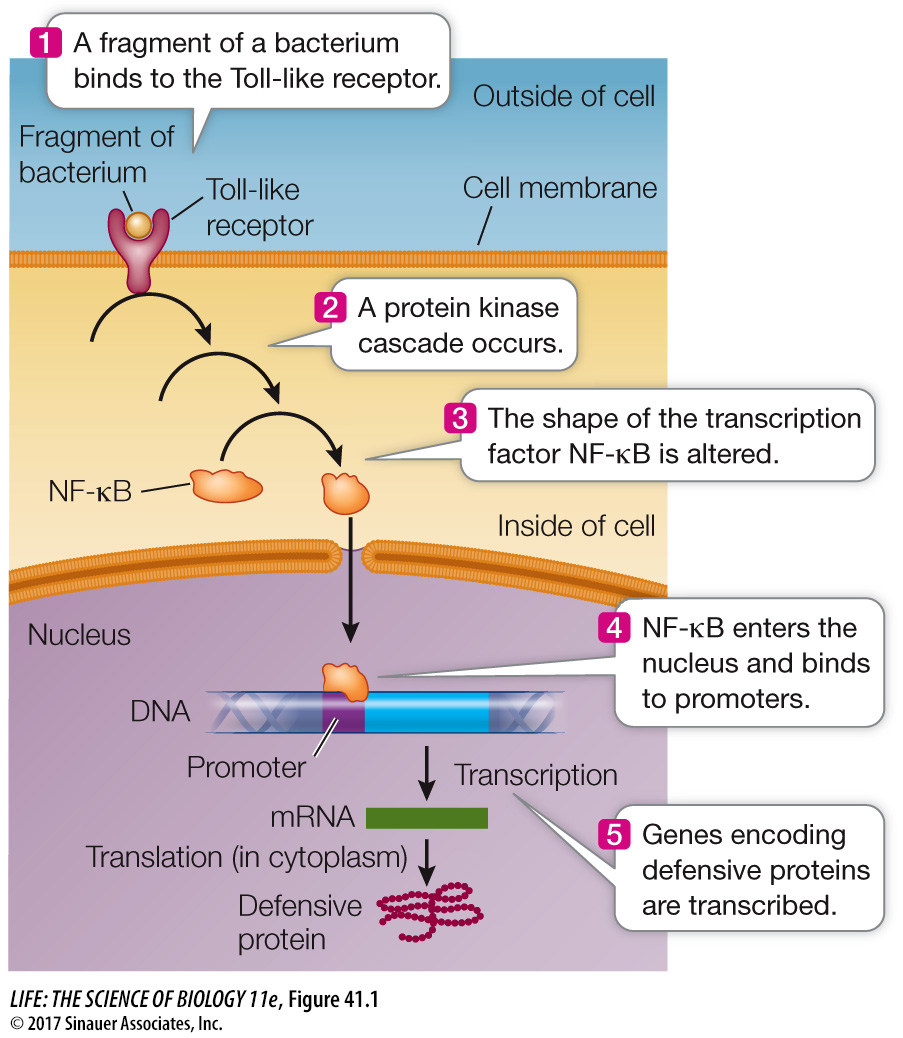Innate defenses evolved before adaptive defenses
All animals have innate defenses against their enemies. For example, the arthropod Tachypleus tridentatus—the Japanese horseshoe crab—
Barriers include physical, chemical, and biological mechanisms for resisting infections. The horseshoe crab has the hard exoskeleton that is characteristic of arthropods. This shell acts to protect the crab from invasion by pathogens.

Cells involved in innate defenses include phagocytes that bind to microbial pathogens, ingest them by endocytosis, and destroy them by hydrolysis. Amebocytes in the blood of the horseshoe crab fufill this defensive role.

Molecules that are toxic to invading pathogens are important in innate defense. The horseshoe crab has a wide array of such molecules that are released from cells in its blood. These molecules include peptides that disrupt the bacterial cell membrane, rendering it permeable; and peptides that bind to bacterial surfaces and cross-
link them. 
Studies of innate immunity, along with genome sequencing, have revealed that the recognition and activation phases of innate immunity evolved very early in animals. For example, animals as diverse as humans and fruit flies share a class of receptors, called Toll-

*connect the concepts The recognition of PAMPs is widespread in immunity and is therefore an evolutionarily ancient mechanism. Plants have an immune response to invading pathogens that also involves PAMPs. See Key Concept 38.1.